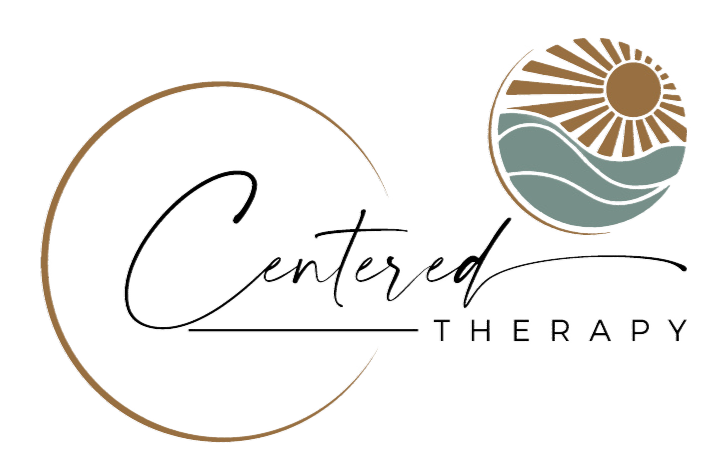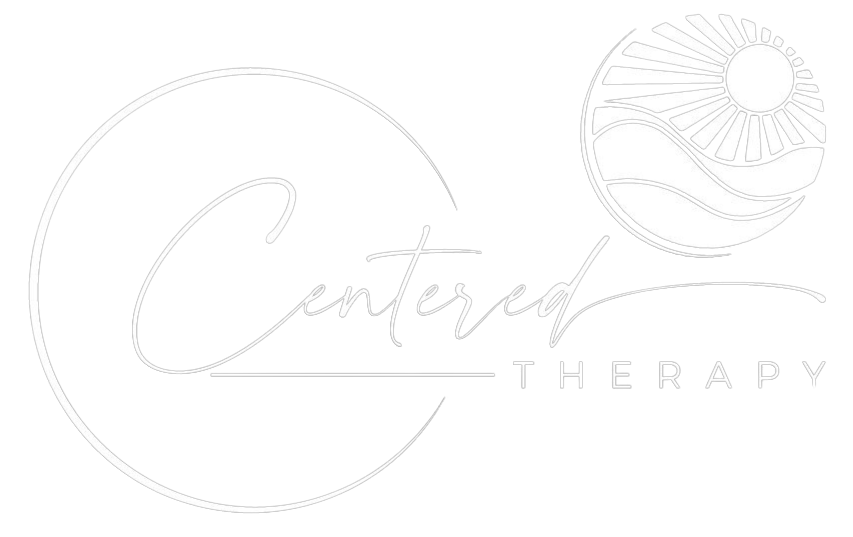Post-Traumatic Stress Disorder Diagnosis
The process of diagnosing PTSD involves a thorough assessment conducted by qualified mental health professionals. If an individual suspects they may have PTSD, they might recognize certain signs and symptoms within themselves, such as recurring distressing memories, nightmares, avoidance of trauma-related triggers, negative changes in mood or thinking, and heightened emotional reactivity.
Some people start with researching “PTSD tests online” and take online tests and quizzes that are available.
Centered Therapy Counseling mental health care professionals believe assessments can be a valuable first step toward getting treatment. All too often people stop short of seeking help out of fear their concerns aren’t legitimate or severe enough to warrant professional intervention. Take your results to a doctor or licensed mental health professional to begin a discussion.
However, self-diagnosis can be misleading, as these symptoms might be indicative of other mental health conditions or life stressors.
A professional diagnosis is crucial for several reasons. Firstly, mental health professionals have the expertise to differentiate between PTSD and other disorders, ensuring accurate treatment. Secondly, they follow standardized criteria outlined in the Diagnostic and Statistical Manual of Mental Disorders (DSM-5), ensuring consistency and reliability in the diagnostic process.
Mental health professionals employ various tools and methods to accurately diagnose PTSD. The primary approach involves conducting clinical interviews, during which they ask questions to assess the individual’s current symptoms, trauma history, and the extent of distress or impairment experienced. To standardize the diagnostic process, structured diagnostic interviews are used, such as the Clinician-Administered PTSD Scale (CAPS) and the PTSD Symptom Scale-Interview (PSS-I), which adhere to the DSM-5 criteria for PTSD. Self-report questionnaires, like the Posttraumatic Stress Disorder Checklist for DSM-5 (PCL-5) and the Impact of Event Scale-Revised (IES-R), are valuable in gauging the severity and frequency of PTSD symptoms. Moreover, trauma history questionnaires provide essential details about the traumatic event(s) experienced. Cultural and linguistic assessments are considered to account for differences in symptom expression across diverse backgrounds. Evaluating the functional impairment caused by PTSD symptoms in daily life, relationships, and overall well-being is also integral to the diagnosis. Collateral information from family members or friends can offer valuable insights, and in some cases, professionals may observe the individual’s behavior and responses during the assessment. Employing a combination of these tools and methods allows mental health professionals to make informed and accurate PTSD diagnoses, helping individuals receive appropriate support and treatment.
PTSD Diagnostic Criteria
The diagnosing criteria for Post-Traumatic Stress Disorder (PTSD) are outlined in the Diagnostic and Statistical Manual of Mental Disorders, Fifth Edition (DSM-5), which is a widely used classification system for mental health disorders. To receive a diagnosis of PTSD, an individual must meet the following criteria:
Exposure to Trauma: The person must have been exposed to or directly experienced a traumatic event involving actual or threatened death, serious injury, or sexual violence. They may have also witnessed such an event happening to others, learned about the traumatic event happening to a close family member or friend, or been repeatedly exposed to distressing details of traumatic events (such as first responders).
Intrusive Symptoms: The person must experience one or more intrusive symptoms related to the traumatic event. These symptoms include recurrent and distressing memories, nightmares, or flashbacks.
Avoidance: The individual avoids trauma-related stimuli, such as thoughts, feelings, people, places, or activities associated with the traumatic event.
Negative Mood and Cognition: The person may experience negative thoughts or feelings that began or worsened after the trauma. They may have difficulty remembering important aspects of the event or have overly negative beliefs about themselves or the world.
Changes in Arousal and Reactivity: The person may display changes in arousal, such as irritability, aggression, reckless behavior, or difficulty concentrating. They may also experience increased hypervigilance or an exaggerated startle response.
Duration: The symptoms must persist for more than one month.
Functional Impairment: The symptoms must cause significant distress or functional impairment in various areas of the individual’s life, such as work, relationships, or social activities.
PTSD Treatment: Psychotherapy
Psychotherapy, also known as talk therapy or counseling, is a fundamental and effective treatment option for individuals with PTSD. It involves working with a trained mental health professional to explore and address the underlying causes of PTSD symptoms, develop coping strategies, and promote healing and recovery. Several types of psychotherapy have shown to be particularly beneficial for individuals with PTSD:
- Cognitive-Behavioral Therapy (CBT): CBT is one of the most widely used and researched therapies for PTSD. It aims to identify and modify negative thought patterns and behaviors associated with trauma. Through exposure therapy, the individual gradually confronts trauma-related triggers in a safe environment, reducing the fear response over time. CBT also teaches coping skills to manage distressing emotions and build resilience.
- Eye Movement Desensitization and Reprocessing (EMDR): EMDR is another evidence-based therapy for PTSD. During EMDR sessions, the individual recalls traumatic memories while simultaneously focusing on bilateral stimulation, typically through eye movements or taps. This process helps process traumatic memories and reduce their emotional intensity.
- Group Therapy: Group therapy brings together individuals with PTSD to share their experiences, provide mutual support, and learn from each other’s coping strategies. It can foster a sense of belonging and reduce feelings of isolation.
- Psychodynamic Therapy: This form of therapy explores how past experiences and unresolved conflicts may contribute to current PTSD symptoms. By addressing these underlying issues, psychodynamic therapy aims to alleviate present distress.
- Trauma-Focused Cognitive-Behavioral Therapy (TF-CBT): TF-CBT is specifically designed for children and adolescents with PTSD. It incorporates cognitive-behavioral techniques with a focus on trauma processing and parental involvement.
- Prolonged Exposure Therapy (PE): PE involves gradually confronting trauma memories and situations to reduce avoidance behavior and emotional distress. The individual may narrate their trauma story repeatedly to desensitize themselves to traumatic triggers.
- Narrative Exposure Therapy (NET): NET is a structured therapy that helps individuals process traumatic memories by constructing a coherent narrative of their life, including traumatic events.
It’s important to note that different therapy approaches work better for different individuals, and the choice of therapy may depend on the severity of symptoms, personal preferences, and the therapist’s expertise. Some individuals may benefit from a combination of therapies.
At Centered Therapy Counseling Health we offer a variety of psychotherapy options to treat PTSD and trauma related disorders. Our therapists who specialize in PTSD/Trauma offer in-person and remote appointments. To find a therapist near you who specializes in PTSD treatment, browse Centered Therapy Counseling therapist directory by applying “PTSD/Trauma” selection in the “Treatment Area” drop down box.
Medication Treatment Options for PTSD
Post-Traumatic Stress Disorder (PTSD) can be treated with medications as part of a comprehensive treatment plan. Medications are often prescribed to manage the symptoms associated with PTSD, but it’s important to note that they are typically used in conjunction with therapy and other forms of support. The specific medications prescribed may vary based on the individual’s symptoms and overall health.
Here are some common types of medications used in the treatment of PTSD:
- Selective Serotonin Reuptake Inhibitors (SSRIs): SSRIs are a class of antidepressant medications that work by increasing the levels of serotonin in the brain. They are often used to treat symptoms of depression, anxiety, and intrusive thoughts in PTSD. Common SSRIs used for PTSD include sertraline (Zoloft), paroxetine (Paxil), and fluoxetine (Prozac).
- Serotonin-Norepinephrine Reuptake Inhibitors (SNRIs): SNRIs are another type of antidepressant that increases levels of serotonin and norepinephrine in the brain. They can help with symptoms of depression and anxiety in PTSD. Venlafaxine (Effexor) is an example of an SNRI used for PTSD.
- Prazosin: Prazosin is a medication originally used to treat high blood pressure, but it has shown promise in reducing nightmares and sleep disturbances associated with PTSD. It helps by blocking certain receptors in the brain related to adrenaline responses.
- Atypical Antipsychotics: In some cases, atypical antipsychotic medications may be prescribed to help manage severe anxiety, aggression, or dissociative symptoms associated with PTSD. Medications like quetiapine (Seroquel) or risperidone (Risperdal) are examples of atypical antipsychotics that might be used.
- Benzodiazepines: These medications are sometimes used for short-term relief of anxiety and sleep disturbances. However, they are typically avoided for long-term use in PTSD treatment due to the risk of dependency and potential worsening of symptoms.
It’s essential to work closely with a qualified mental health professional, such as a psychiatrist or a psychiatric nurse practitioner, to determine the most appropriate medication and dosage for an individual’s specific needs. Each person’s response to medication can vary, so close monitoring is crucial to assess its effectiveness and manage any potential side effects.
At Centered Therapy Counseling Health we offer medication management options for PTSD. Our psychiatrists who specialize in PTSD/Trauma offer in-person and remote appointments. To find a psychiatrist near you who specializes in PTSD treatment, browse Centered Therapy Counseling psychiatrist directory by applying “PTSD/Trauma” selection in the “Treatment Area” drop down box.
Treatments for CPTSD (Complex PTSD)
PTSD (Post-Traumatic Stress Disorder) results from a single traumatic event, while CPTSD (Complex Post-Traumatic Stress Disorder) arises from prolonged, complex traumas, especially during childhood. CPTSD includes all PTSD symptoms and adds difficulties in emotional regulation, self-esteem, and relationships. CPTSD is typically more chronic and challenging to treat. While PTSD is recognized in the DSM-5, CPTSD is not yet officially recognized as a separate diagnosis, often being identified as PTSD with “complex features” specification.
Treatment options for Complex Post-Traumatic Stress Disorder (CPTSD) may involve additional interventions that address the specific symptoms and challenges associated with prolonged and repetitive trauma.
While many treatments used for PTSD are also beneficial for CPTSD, here are some additional therapeutic approaches that are specifically geared towards CPTSD:
Schema Therapy: Schema therapy focuses on identifying and changing deeply ingrained negative patterns or schemas that develop as a result of repeated traumas. This approach helps individuals understand how past experiences have shaped their core beliefs and behaviors and aims to heal emotional wounds and maladaptive coping strategies.
Dialectical Behavior Therapy (DBT): DBT is a comprehensive therapy that combines elements of cognitive-behavioral therapy with mindfulness techniques. It helps individuals with CPTSD develop skills in emotional regulation, distress tolerance, interpersonal effectiveness, and mindfulness.
Internal Family Systems (IFS) Therapy: IFS therapy is based on the idea that individuals have different “roles” or “parts” within the family. This approach helps individuals explore and understand these parts, resolve internal conflicts, and cultivate self-compassion.
Sensorimotor Psychotherapy: Sensorimotor psychotherapy focuses on the connection between the body and mind, helping individuals process trauma by addressing physical sensations and movement patterns associated with traumatic memories.
Attachment-Based Therapies: Since CPTSD often involves disruptions in early attachment relationships, therapies that focus on repairing and strengthening attachment bonds may be helpful. These therapies aim to develop secure attachments and promote healthier relationships.
Creative Arts Therapies: Creative arts therapies, such as art therapy, music therapy, or dance/movement therapy, can be valuable in helping individuals express and process emotions that may be difficult to verbalize.
It’s essential to remember that treatment for CPTSD should be individualized, and a combination of different therapeutic approaches may be most effective. A qualified mental health professional with experience in trauma and complex trauma is best equipped to assess the individual’s needs and design a comprehensive treatment plan tailored to their specific symptoms and experiences. Browse Centered Therapy Counseling directory of licensed therapists to find the one that is right for you. You can search by “Services Provided” to select a type of therapy or treatment you are looking for or select “PTSD/Trauma” in the “Treatment Area” drop down box to see all providers who specialize in PTSD/Trauma care.
Innovative PTSD Treatments
PTSD is typically treated with therapy, medication, or a combination of both. While this approach can be effective for some people, according to the research about 33% of people in the general population who have PTSD are resistant to treatment. The non-response rates for Cognitive Behavioral Therapy (CBT) may be as high as 50% and for selective antidepressants about 20–40%.
The demand for more innovative PTSD treatments arises from the recognition that existing treatment approaches may not fully address the complexities of this debilitating condition.
Some of the most promising and innovative treatments that were being studied and implemented at that time include:
MDMA Therapy: MDMA-assisted therapy for PTSD, also known as MDMA therapy or psychedelic-assisted therapy, is an innovative approach to treating Post-Traumatic Stress Disorder (PTSD). It involves the supervised use of MDMA, commonly known as ecstasy, in combination with psychotherapy to assist individuals in processing and healing from traumatic experiences.
Stellate ganglion block: Stellate ganglion block (SGB) is a medical procedure that involves injecting a local anesthetic into the stellate ganglion, a cluster of nerves located in the neck. The stellate ganglion is part of the sympathetic nervous system, which plays a role in the body’s stress response. The injection works to block or interrupt the transmission of nerve signals from the stellate ganglion to the brain.
The theory behind using SGB for PTSD is based on the idea that individuals with PTSD may have an overactive sympathetic nervous system, which contributes to the intense stress responses and hyperarousal commonly seen in the condition. By temporarily blocking the stellate ganglion, the procedure aims to interrupt the hyperactivity of the sympathetic nervous system, leading to a reduction in PTSD symptoms.
Studies have shown that SGB can have a rapid and significant impact on symptoms related to PTSD. Some individuals experience a decrease in hyperarousal, flashbacks, nightmares, and anxiety following the procedure. The effects of SGB can be short-term, and multiple treatments may be required for sustained benefits.
It is important to note that while SGB shows promise as a potential treatment for PTSD, more research is needed to fully understand its safety, long-term effectiveness, and the specific mechanisms by which it provides relief.
Ketamine-assisted therapy: Ketamine-assisted therapy (often called Ketamine infusions) have shown promise as a potential treatment for PTSD. Ketamine is a dissociative anesthetic that, when administered at sub-anesthetic doses, can produce rapid and profound changes in mood and perception. It acts on the brain’s glutamate receptors, which are involved in mood regulation and the processing of traumatic memories.
During ketamine infusions for PTSD treatment, a carefully controlled dose of ketamine is delivered intravenously under medical supervision. The infusion is typically conducted in a safe and comfortable environment. The individual may experience a temporary dissociative state or altered perception during the infusion, but this is closely monitored by healthcare professionals.
The unique property of ketamine is its ability to rapidly alleviate symptoms of depression, anxiety, and distress associated with PTSD. It can induce a sense of emotional detachment, allowing individuals to approach their traumatic memories with reduced fear and emotional reactivity. This creates an opportunity for them to process and reframe these memories in a more adaptive and less distressing way.
Studies have shown that ketamine infusions can lead to significant reductions in PTSD symptoms, including nightmares, flashbacks, and hyperarousal, often within hours or days after treatment. The rapid onset of relief is particularly advantageous for individuals who have not responded well to traditional therapies or who require immediate symptom relief.
At Centered Therapy Counseling Health we offer a variety of treatment options for PTSD including some of the innovative methods. Our psychiatrists and therapists who specialize in PTSD/Trauma offer in-person and remote appointments. Schedule an appointment today to discuss your treatment plan.


